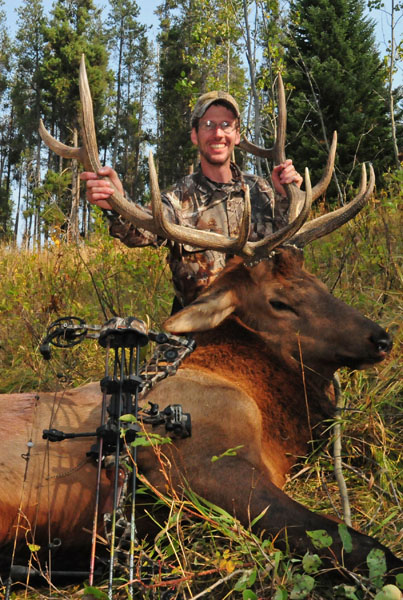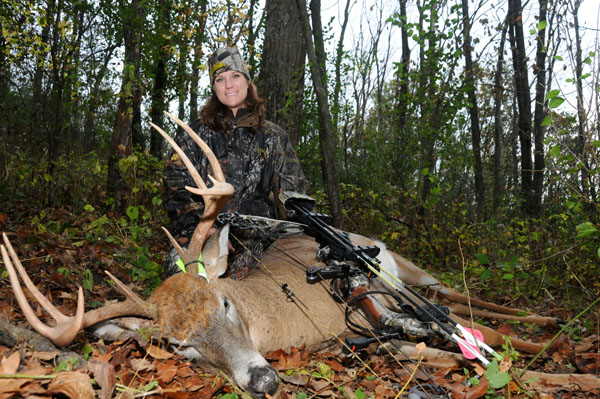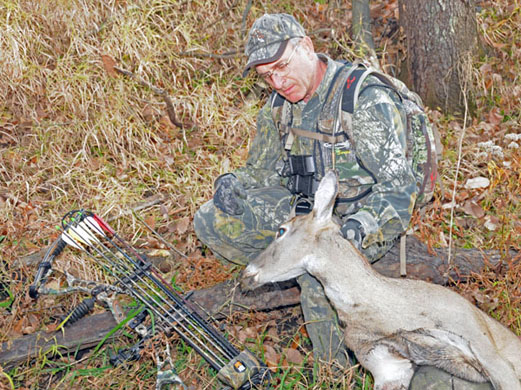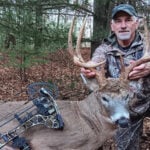LAST UPDATED: May 1st, 2015
While shooting four models of 100-grain broadheads to fine-tune my hunting bow this past summer, I couldn’t help but think about my first archery deer season 42 years ago.My bow-hunting setup in 1971 consisted of cedar arrows, Bear Razorhead broadheads, and a 43-pound Bear Grizzly recurve bow. I traded away that bow in 1974 after switching to an Allen compound bow, which required I use sights. And because I’m left-hander with a right-dominant eye, I needed to learn to shoot right-handed if I wanted to use a peep and pin sights. That old Bear Grizzly was the last bow I parted with. I’m now hunting with my 15th bow since switching to compounds almost 40 years ago, and all of its predecessors hang in a closet or in my basement.
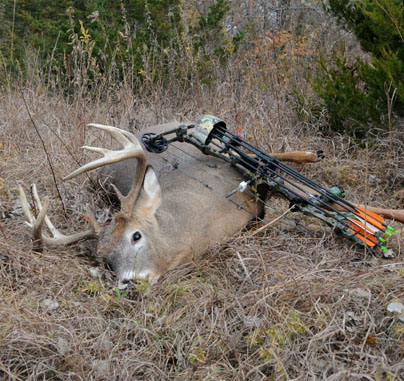
Whether you’re hunting elk or whitetails, or shooting trophy bucks or mature does, you’ve benefited from many great bowhunting advances in technology.
In the interest of safety — mine and anyone nearby — I’ll never shoot my first two compounds again. And in the interest of my forearm, I’ll never shoot the third, either. Its string has a painful tendency to smack my forearm at the least hint of handle torque. Sentiment is the only thing that keeps those three bows hanging around. But I feel confident shooting and hunting with any of my other compounds, all bought since the mid-1980s.
Even though practice, perseverance and woodsmanship separate good bowhunters from average-and-worse bowhunters, today’s archery equipment can make average shooters good, and good shooters excellent. The bows and arrows are superior to anything I hunted with in the early 1970s. I’ll even take today’s broadheads over the reputable, but heavy, Bodkin and Razorhead broadheads of my youth. For instance, all summer I’ve been practicing with 100-grain field-points in the backyard. Last week I replaced the field-points with three-blade 100-grain broadheads made by Muzzy, New Archery Products, Tru-Fire and Slick Trick.
Technology not only makes better bows than ever, it also ensures we’re shooting better broadheads, better arrows and better arrow rests.
I doubt my bow is tuned any more finely than those owned by most archers, but it still launched all four models of broadheads with bull’s-eye accuracy. I never had that type of “out-of-the-box” performance with yesterday’s broadheads. Of course, maybe part of that accuracy can be attributed to the mechanical trigger release I use instead of the traditional three-finger approach. After struggling with a bad flinch in the Fall 1983, I made that switch and never looked back. Another factor might be the carbon-base arrow shafts I now shoot. These shafts are better than the old cedar or fiberglass shafts I used in the early 1970s, or the old 2020 aluminum shafts that I shot from my first couple of compound bows. Only when my supply of 2020s finally ran low in 1996 did I move on.
Technology has helped make archery more accessible to youngsters and women, thanks to advances in let-off and lightweight materials.
Another big advantage enjoyed by today’s bowhunters are light-gathering pin sights. Not long ago, I thought a dot of red or white paint on a pin sight represented high-tech aiming. How quaint. Although the earliest light-gathering pin sights were almost always flimsy and needed protecting, it’s been nearly a decade since I had one fall apart in the field. Even in the shadows of dawn and dusk, these sights are highly visible.
Sure, I know what some people think: All this technology creates an unfair advantage for archers. Buck pellets. One constant, despite all the advances, is the fact that bows remain short-range weapons. I killed my first deer with a 35-yard shot with the 43-pound recurve bow in 1973. That still ranks as my farthest shot on a whitetail.
The author with a mature doe shot in Iowa during the 2011 archery season.
In fact, a good self-imposed restriction for bow-shots on woodland whitetails will always be 25 yards and less. The value of today’s equipment is that it reduces the chance for errors and poor shots at such ranges. If you’re a master with the old gear, fine. But if you’re not, don’t stand by it because of misguided sentiment or nostalgia. You’re hunting deer, not the past.

 By
By 